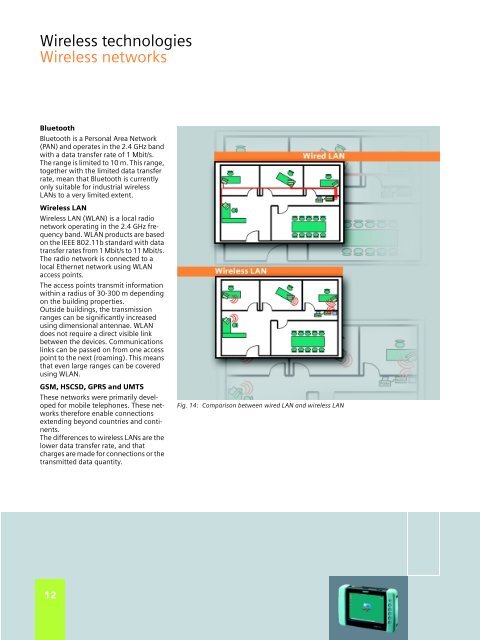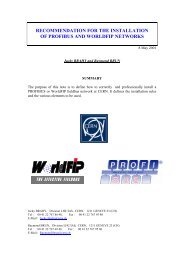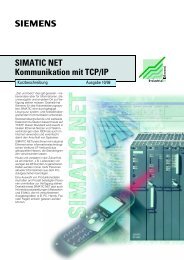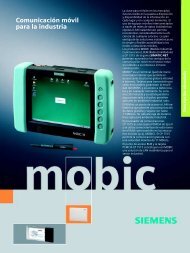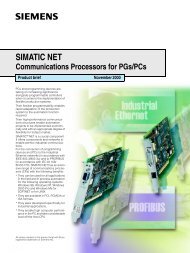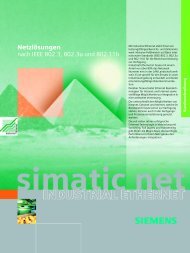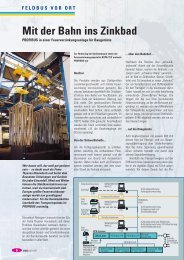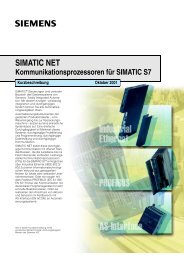Mobile communications for industrial applications - CERN
Mobile communications for industrial applications - CERN
Mobile communications for industrial applications - CERN
You also want an ePaper? Increase the reach of your titles
YUMPU automatically turns print PDFs into web optimized ePapers that Google loves.
Wireless technologiesWireless networksBluetoothBluetooth is a Personal Area Network(PAN) and operates in the 2.4 GHz bandwith a data transfer rate of 1 Mbit/s.The range is limited to 10 m. This range,together with the limited data transferrate, mean that Bluetooth is currentlyonly suitable <strong>for</strong> <strong>industrial</strong> wirelessLANs to a very limited extent.Wireless LANWireless LAN (WLAN) is a local radionetwork operating in the 2.4 GHz frequencyband. WLAN products are basedon the IEEE 802.11b standard with datatransfer rates from 1 Mbit/s to 11 Mbit/s.The radio network is connected to alocal Ethernet network using WLANaccess points.The access points transmit in<strong>for</strong>mationwithin a radius of 30-300 m dependingon the building properties.Outside buildings, the transmissionranges can be significantly increasedusing dimensional antennae. WLANdoes not require a direct visible linkbetween the devices. Communicationslinks can be passed on from one accesspoint to the next (roaming). This meansthat even large ranges can be coveredusing WLAN.GSM, HSCSD, GPRS and UMTSThese networks were primarily developed<strong>for</strong> mobile telephones. These networksthere<strong>for</strong>e enable connectionsextending beyond countries and continents.The differences to wireless LANs are thelower data transfer rate, and thatcharges are made <strong>for</strong> connections or thetransmitted data quantity.Fig. 14: Comparison between wired LAN and wireless LAN12


